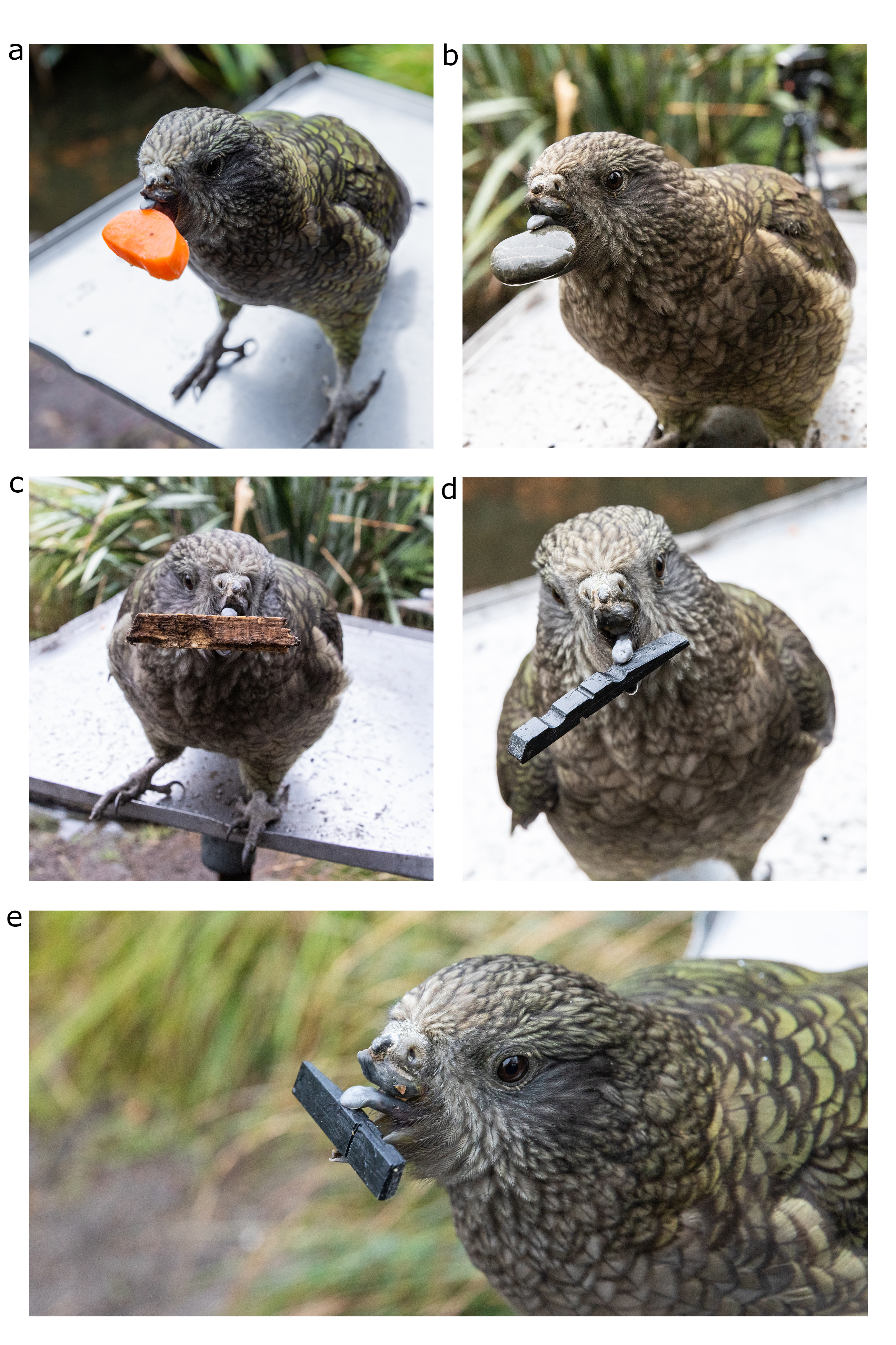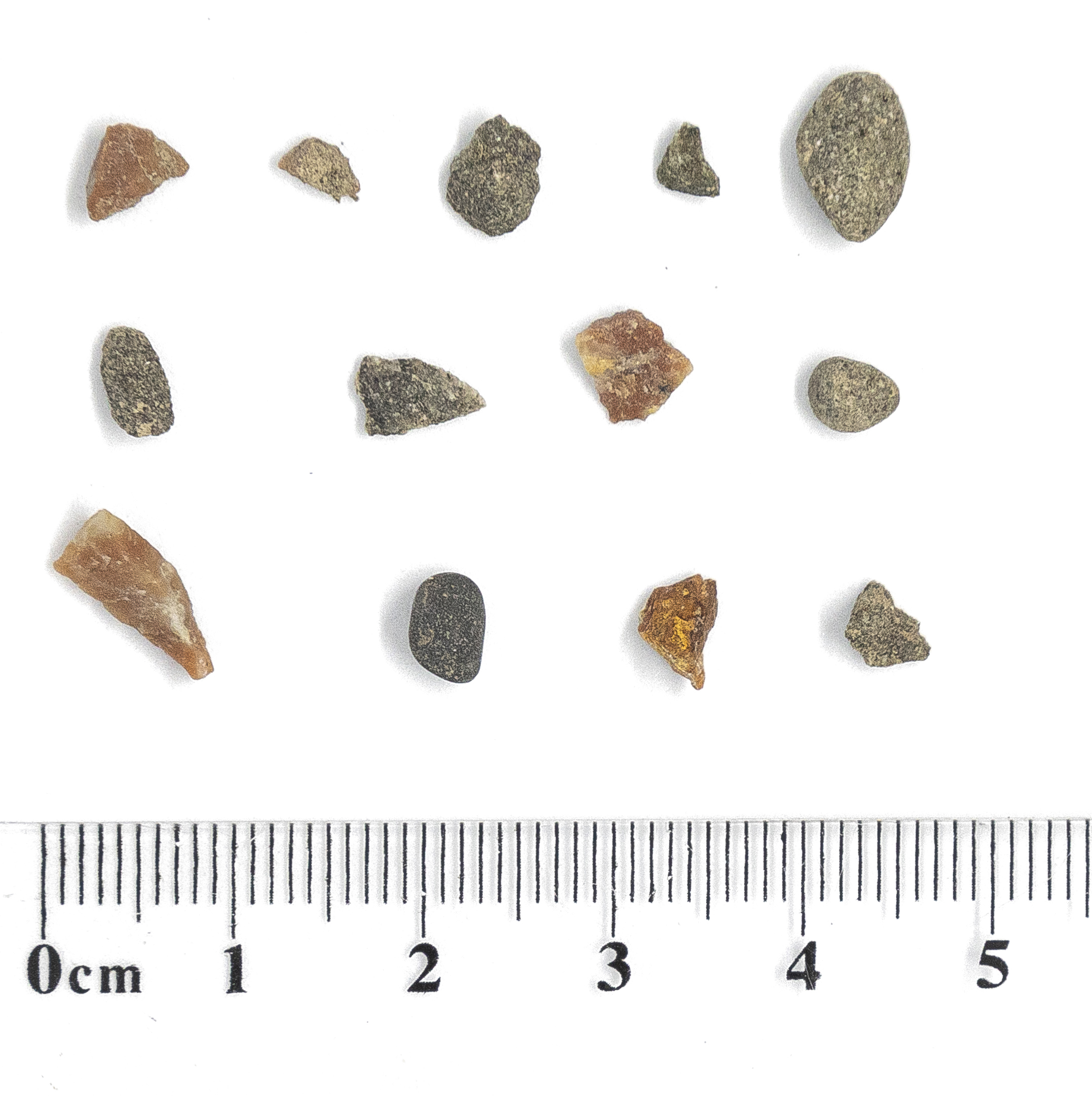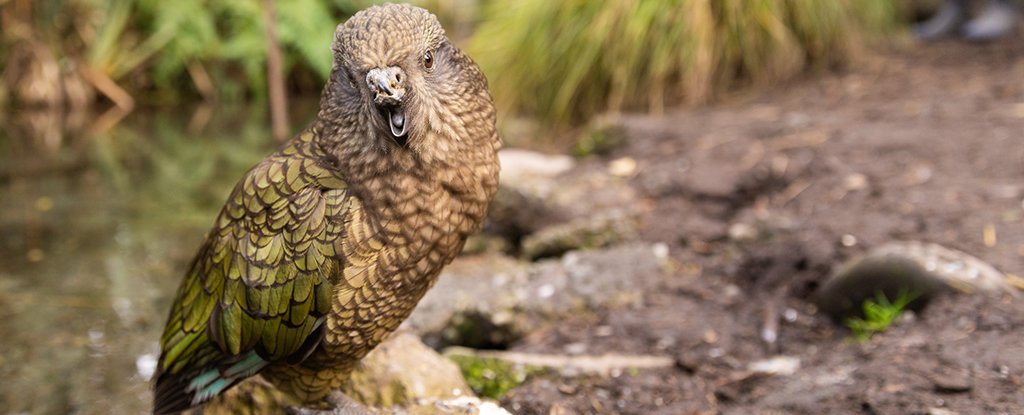Products You May Like
There’s nothing better than a nice exfoliation to clean your parrot self after a long day.
Apparently, that holds true even if you’re a parrot with only half a beak. Biologists have discovered that Bruce – a disabled New Zealand kea (Nestor notabilis) at the Willowbank Wildlife Reserve in Christchurch – has been using tiny little pebbles to preen himself.
This is particularly exciting for biologists, as this is both the first time scientists have recorded a kea using a tool for self-care and the first scientific observation of a parrot using a pebble in this way.
“Among birds, self-care tooling is seemingly rare in the wild, despite several anecdotal reports of this behavior in captive parrots,” the researchers write in their new paper.
“Here, we show that Bruce, a disabled parrot lacking his top mandible, deliberately uses pebbles to preen himself.”
 Bruce holding a variety of objects. (Bastos et al., Scientific Reports, 2021)
Bruce holding a variety of objects. (Bastos et al., Scientific Reports, 2021)
Preening might seem like an activity that a parrot could live without, but it’s critical for bird hygiene and feather maintenance. Preening helps birds remove dust, dirt and parasites, and allows them to align feathers for insulation, waterproofing, and optimal aerodynamics.
It also makes sure they look their best for potential mates.
Usually, kea – an endangered parrot species found only on the South Island of New Zealand – will use their powerful beaks to preen themselves.
But Bruce was found back in 2013 in the wild as a juvenile, badly injured with the top half of his beak missing. Although his caretakers aren’t sure how this occurred, they believe it could have been the result of a pest trap.
So, with no proper beak to preen with, you might think Bruce would end up looking a little shabby. However, Bruce has adapted incredibly well to life with no top beak – instead using a variety of tools such as pebbles in between his bottom beak and his tongue to help him undertake these tasks.
“To have an individual innovate tool use in response to his disability shows great flexibility in their intelligence. They’re able to adapt and flexibly solve new problems as they emerge,” says one of the study authors, animal cognitive researcher Amalia Basto.
“The pebbles he picked up were different to those picked up by other kea, they were always of a certain size. This points to an intentional act: to find a way to preen himself without the top half of his beak.”
 Bruce’s pebbles. (Bastos et al., Scientific Reports, 2021)
Bruce’s pebbles. (Bastos et al., Scientific Reports, 2021)
When keepers first noticed Bruce’s penchant for pebbles in 2019, the researchers sprung into action. They watched him across nine days, discovering ample evidence that this really was tool use for self-care, rather than something less exciting.
“In over 90 percent of instances where Bruce picked up a pebble, he then used it to preen; in 95 percent of instances where Bruce dropped a pebble, he retrieved this pebble, or replaced it, in order to resume preening,” the team writes.
“Bruce selected pebbles of a specific size for preening rather than randomly sampling available pebbles in his environment; no other kea in his environment used pebbles for preening.”
We humans are becoming increasingly aware of tool use in the animal world. Crows are very good at it, cockatoos can make their own tools or just loot our stuff, and even octopuses use tools as a defence against unwanted attention.
The oldest known age for a wild kea is 20 years old, but parrots in captivity can live for 50 years, so we hope Bruce gets to continue his self-care routine for many years yet.
The research has been published in Scientific Reports.
